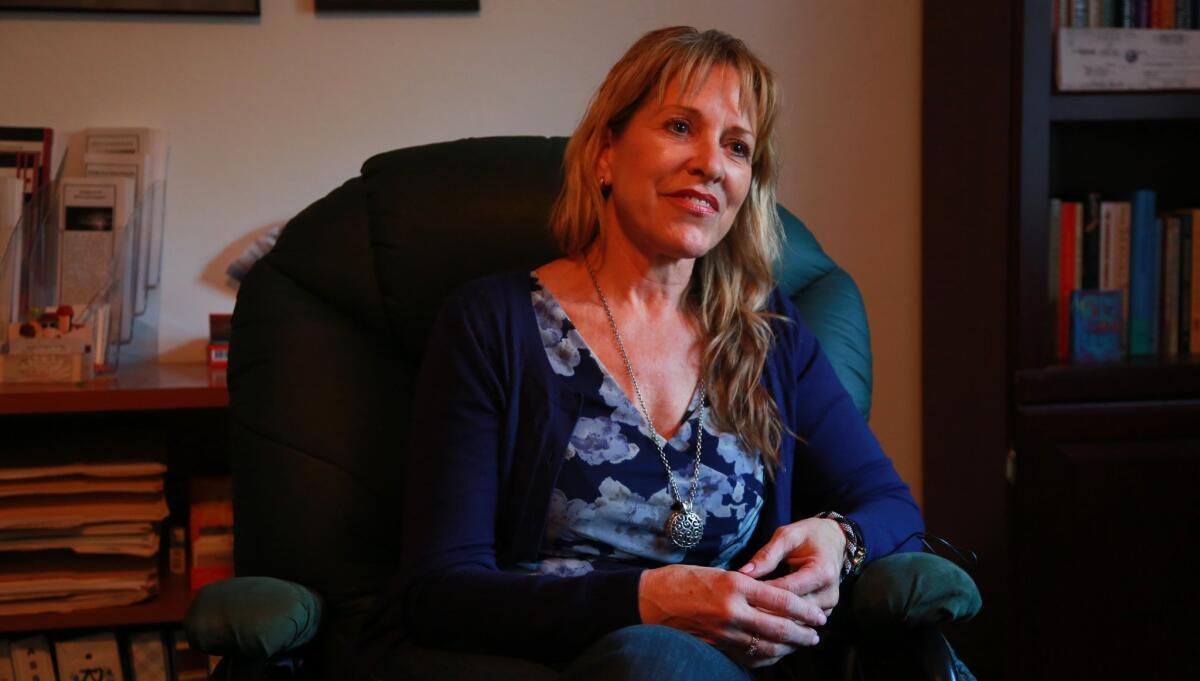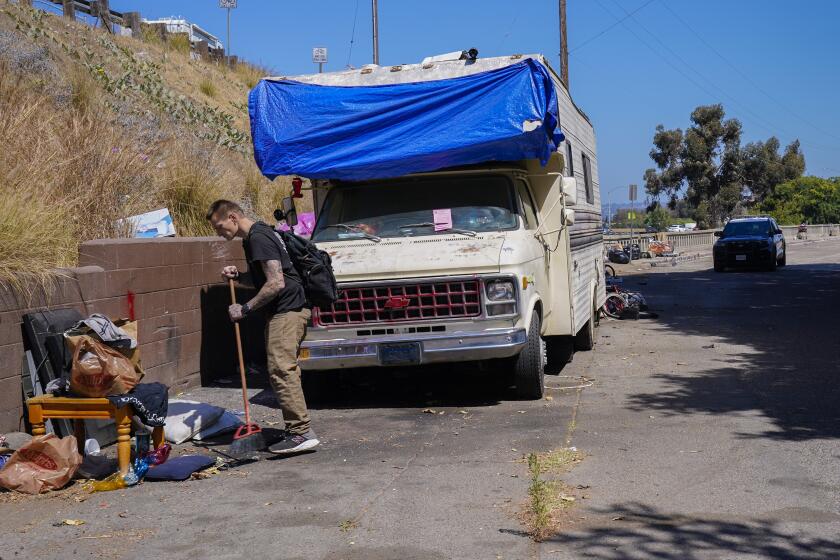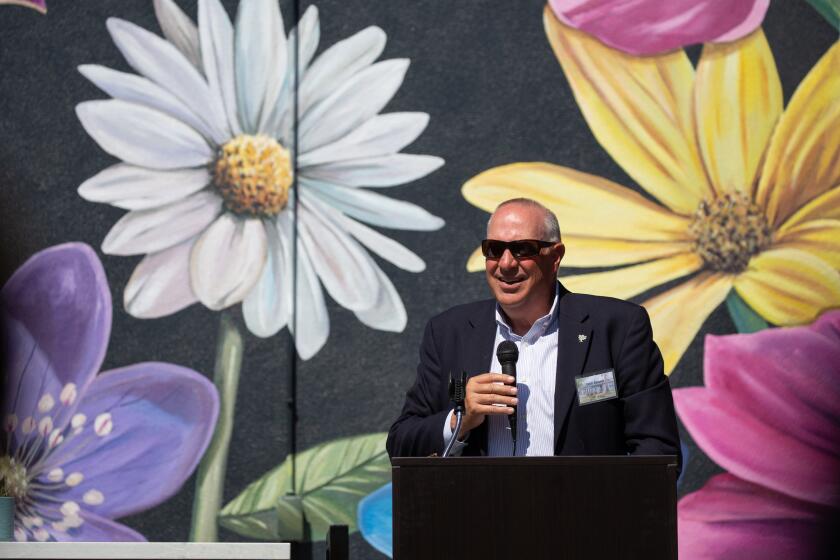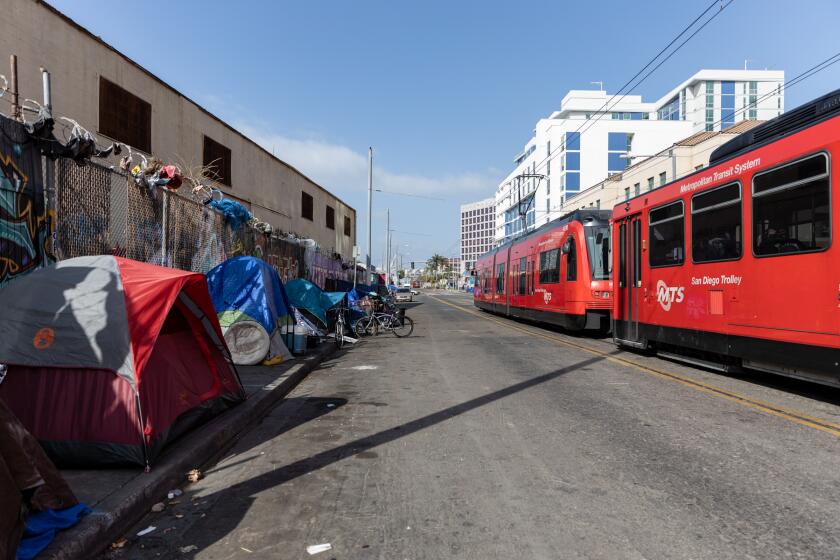Gangs, sex trade a growing problem
Indictments didn’t surprise some East County residents
Many East County residents were alarmed, but not necessarily shocked, earlier this month by the arrest of 22 alleged gang members charged with coercing local schoolgirls into the sex trade.
“It wasn’t a surprise to me,” said Christina Hicks, president of the Kempton Elementary School PTA. “Not in Spring Valley. Nothing really surprises me anymore.”
Hicks, who has teenage sons at Steele Canyon High and Parkway Middle School, said she’s not very worried about her own children, but is concerned for other families with parents who are not as involved. She also is disappointed that the arrests were not followed by community meetings and forums on how to deal with a growing problem of gangs and sex trafficking.
The once-rural Spring Valley is where metropolitan San Diego starts giving way to the region’s backcountry. Urban concerns there have been festering for years yet some residents say they don’t have the resources to deal with them.
“I think we get forgotten about a lot, and I think this is why things like this happen,” Hicks said about Spring Valley. “We’re not a top priority. I think that if we were La Mesa, La Jolla or North Park, things would look very different.”
Hicks said Spring Valley residents must start working together as a community to protect their children. The growing association between gangs and sex trafficking, however, is hardly unique to East County.
Studying gang, prostitution connection
San Diego Deputy District Attorney Mary Ellen Barrett said gang members accounted for more than half of the 68 defendants charged with sex trafficking since January 2013,
“I actually think that it’s higher,” she said about gang activity in sex trafficking. “The police will tell you 90 percent.”
Where to get help
The National Human Trafficking Resource Center provides help, referrals and general information for anyone who is or suspects someone who is being forced to engage in any activity and cannot leave. The center's 24-hour hotline is 1-888-373-7888. Callls are anonymous and confidential.
In the first major case tying gangs to pimping in the county, 29 Oceanside gang members were indicted on federal human-trafficking chargers in 2011.
Last January, 24 alleged gang members in North Park were indicted on sex-trafficking charges that involved bringing underage girls to other states.
Those cases, like the most recently indictments in East County, were prosecuted under the Racketeer Influenced and Corrupt Organizations Act, commonly referred to as RICO.
“It’s high-reward, low-risk,” Barrett said about why gangs have entered the sex-trade field. “It’s all about the money. If you have an amount of meth, you’re done after you sell it. If you have a young girl, you can sell her six times a night.”
“It’s mind-boggling that it’s happening here,” she said. “We’re America’s finest city. It’s beautiful. But there are a number of factors that promote it as a high-prostitution area.”
Multi-state network
In the East County arrests, 19 men and three women were indicted and named members of a hybrid gang known as the Tycoons. According to the indictment, the gang sent young women and girls across state lines to Texas, Arizona, Kansas, Michigan and Nevada.
About 100 victims, some as young as 12, were identified during the two-year investigation.
The arrests came with the help of Grossmont Union High School District personnel who have been trained to look for signs of girls being exploited since at least 2009, the year San Diego County was identified by the FBI as a top location for trafficking.
Jenee Littrell, an assistant principal at the district’s continuation school Chaparall High, has become a nationally recognized figure in the fight against sex trafficking in schools and helped create a booklet on the subject.
“It’s to be proactive, and it’s for schools that may not understand this phenomenon,” she said about the booklet, which was created with a $25,000 U.S. Department of Education grant and is scheduled for release next month.
Littrell said she couldn’t give details about the district’s role in helping law enforcement in the recent arrests, but a news release from the U.S. Attorney’s office credited school officials and other community members with assisting in the investigation.
“They did not look the other way,” U.S. Attorney Laura Duffy said. “They saw signs of trouble, and they reported it. ”
San Diego County Sheriff Bill Gore said the investigation began with work from parents and school resource officers. Joe Garcia, interim special agent in charge for Homeland Security Investigations in San Diego, said the arrests were a reminder that community awareness is crucial in identifying victims and exposing perpetrators.
Meeting on gangs
The first joint meeting between the Gang Intervention and Prevention Commission and the San Diego Human Relations Commission is scheduled for 5:30 p.m. Jan. 22 at Cherokee Point Elementary School, 3735 38th St., San Diego.
What to look for
Littrell said she interviewed educators in districts across the nation to compile a list of what people should look for to recognize sex trafficking victims.
“The warning signs are pretty common,” she said. “Truancy. Bruising. Tattoos (of money signs or gang names). Multiple cell phones. Certain languages.”
The booklet, “Human Trafficking in America’s Schools,” gives more details: An inability to attend school on a regular basis. Sudden possession of expensive items. Frequently running away from home. Frequent travel to other cities. Lack of control over a personal schedule.
Littrell said that as an educator she would not have associated those signs with sex trafficking without advice from law enforcement officials. She stressed that schools must create partnerships outside campuses to work in collaboration in solving the problem.
“It’s not a school issue,” she said. “It’s a community issue.”
The head of one of the county’s home for sex-trafficking victims said she has seen gang involvement increase since she opened her doors in south county almost five years ago, when about half of victims said they were involved in gangs.
(A previous version of this story incorrectly called GenerateHope the only shelter in the county for sex-trafficking victims.)
Today, that amount is closer to 80 percent, said Susan Munsey, founder and executive director of GenerateHope.

Like other pimps before them, gang members sometimes find their victims online or in malls and other areas where young people gather. They often focus on the one girl in a group who doesn’t look up because she is shy, Munsey said, adding that the man then often gets close to a victim by “boyfriending.”
“They pretended to be interested in them as a girlfriend,” she said. “They listen to whatever is going on in their life. I’ve heard more than once from a girl, ‘He’d wipe the tears off my face.’ How endearing is that?”
‘Just this once’
Once the trust is in place, the perpetrator might say that he is having some financial difficult and ask his new girlfriend to help him by doing something “just this once,” Munsey said. He then has power over her in many ways, including a threat of ruining her life with photos or videos.
San Diego resident Tiffany Mester, an advocate for sex trafficking victims, has spoken about the tactics that were used by a pimp to lure her into working for him when she was just 13.

“My childhood set me up to be trafficked,” she said in an interview with the U-T earlier this year.
Mester said Child Protective Services took her away from her mom when she was just 5 years old. While living with her father and stepmother, she said she suffered emotional and physical abuse.
While she was living in a transitional home at 14, a 19-year-old man courted Mester in her vulnerable state, eventually winning her over with the love she never felt at home.
But it was all a ploy and Mester spent the next year and a half working for him, trying to fill an ever-increasing quota that reached $1,500 a night.
Mester said the emotional tie with her pimp was hard to break even after his arrest. Munsey said that is typical for victims who experience “trauma bonding,” adding that the bond seems even greater with victims who have worked for gangs.
“They get into these gangs and they begin to feel an allegiance with them,” she said. “And they’re less likely to turn them over to the police.”
Federal prosecutor Chris Tenorio said law enforcement began shifting from arresting women for prostitution to seeing them as victims of trafficking around 1990.
“In my experience, we’ve never come across a victim who came into the business voluntarily,” he said.
Little reaction
The school-gang sex trafficking story was front-page news, but it still didn’t reach all of Spring Valley. Several people recently asked about the arrests said they had not heard about them.
Still, signs of gang activity are not hard to miss. Bars cover the windows of many homes on Kempton Street near the elementary school, library and teen center, and graffiti and gang tags are easily spotted on walls, electrical boxes and even palm trees.
A man working at a liquor store, however, said he never sees violence in the community. Another man at a recycling center said the community was a safe place, as long as you know who to avoid.
“That’s easy to tell nowadays,” said the man, who identified himself only as David.
Lisa Stewart, PTA president at Monte Vista High in Spring Valley, is frustrated that the community has not responded more to the arrests.
“Why aren’t more parents lining up?” she said. “In my neighborhood, a couple of people have tried to put together a Neighborhood Watch. But until someone’s house is broken into, people don’t want to get involved.”
Barbara Warner, collaborative coordinator with the Spring Valley Youth & Family Coalition, said there is much work to be done in the community to create more awareness of its problems.
“When I heard about this bust going down, part of me was, ‘Yes! We’re so glad there’s a major event demonstrating this,’” she said. “But part of me is also thinking, ‘Oh man, everybody else in the world is going to think, that’s Spring Valley.’”
Cornelius Bowser, a former gang member and a bishop with the Charity Apostolic Church in Santee, said intervention and prevention for both girls and boys is needed to curb the growing problem of gangs and sex trafficking.
“It’s a mind game that’s happening,” said Bowser, a member of the San Diego Gang Intervention and Prevention Commission. “There are a lot of parts that come into play, and it’s easier for men to get caught up in that lifestyle.”
Get Essential San Diego, weekday mornings
Get top headlines from the Union-Tribune in your inbox weekday mornings, including top news, local, sports, business, entertainment and opinion.
You may occasionally receive promotional content from the San Diego Union-Tribune.












